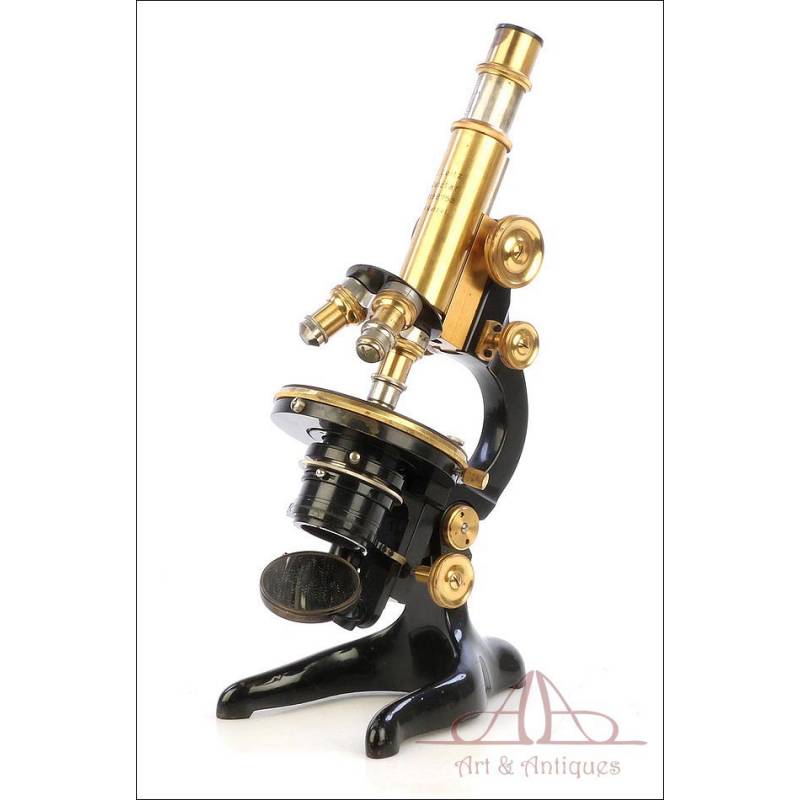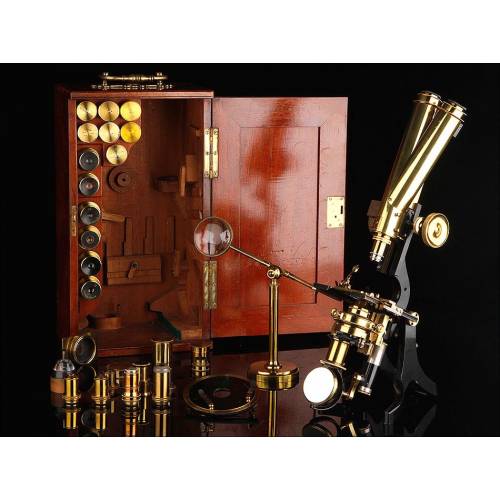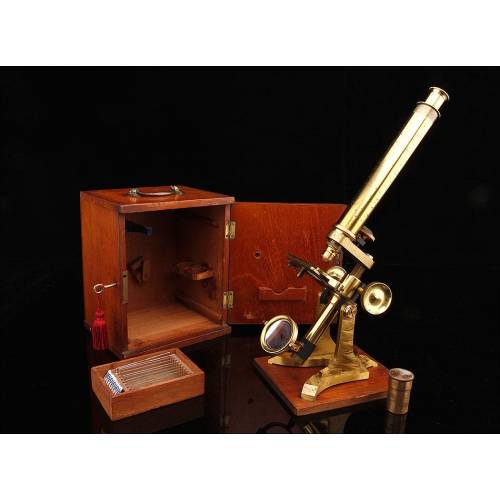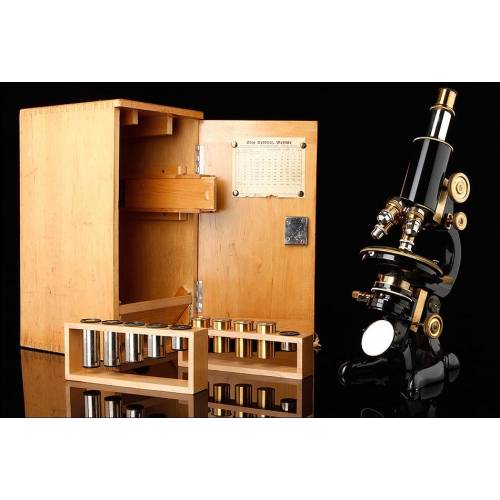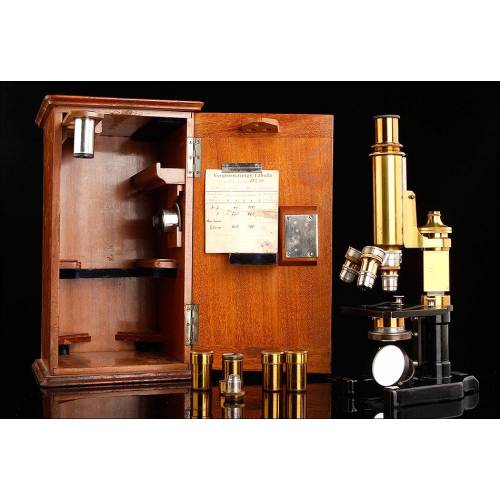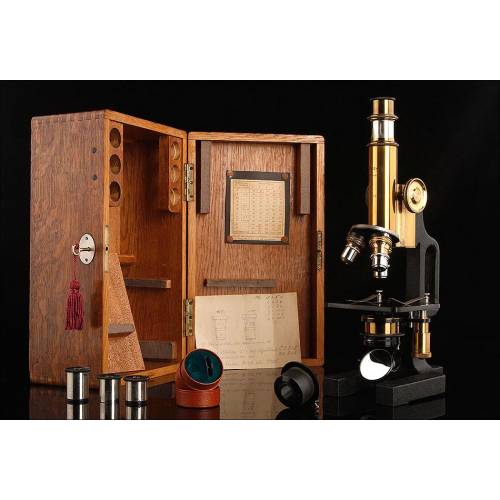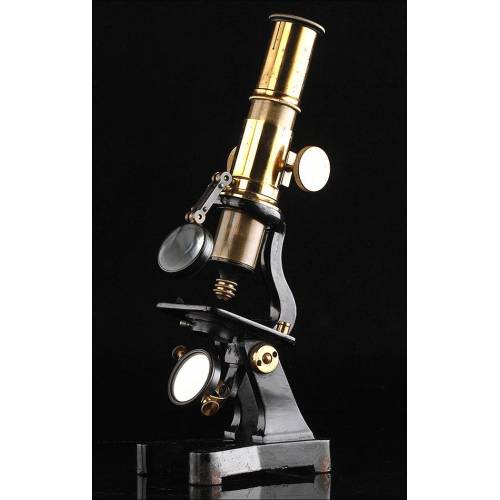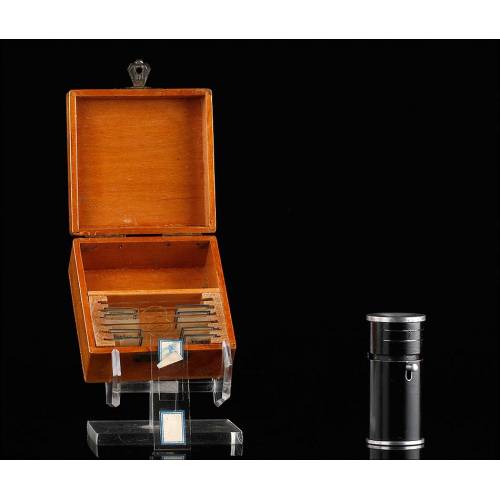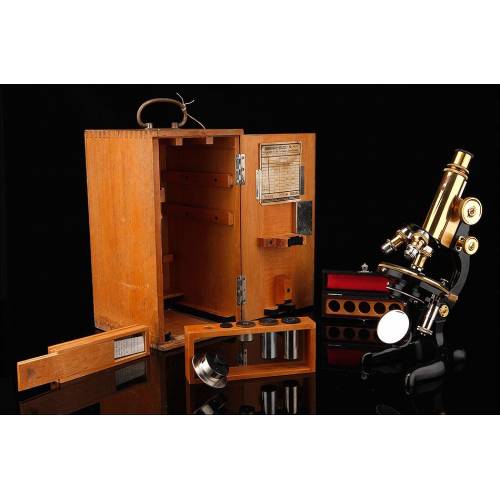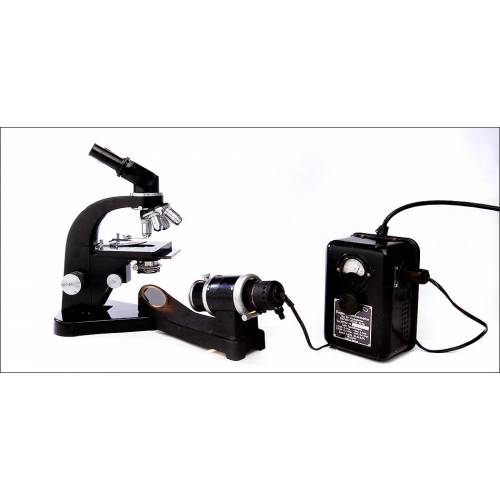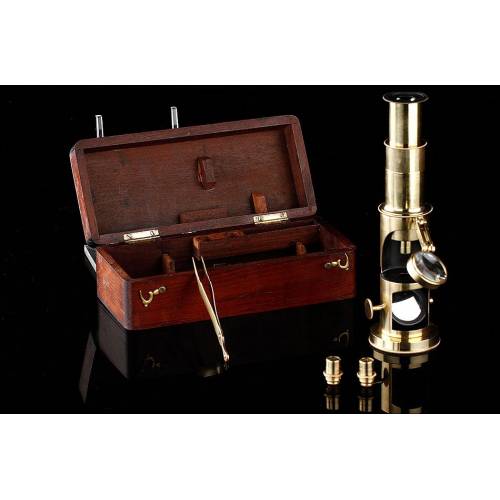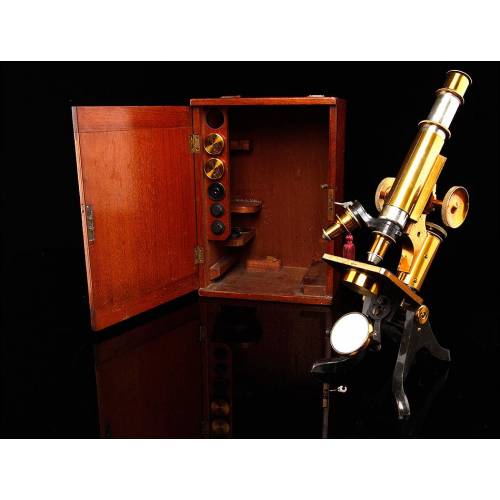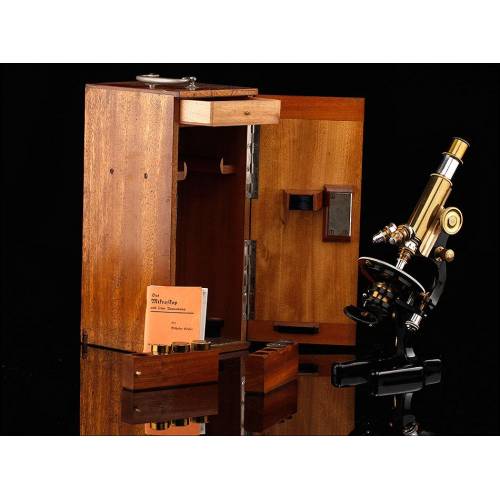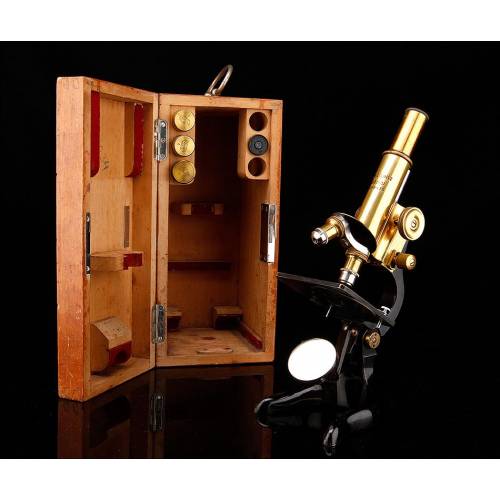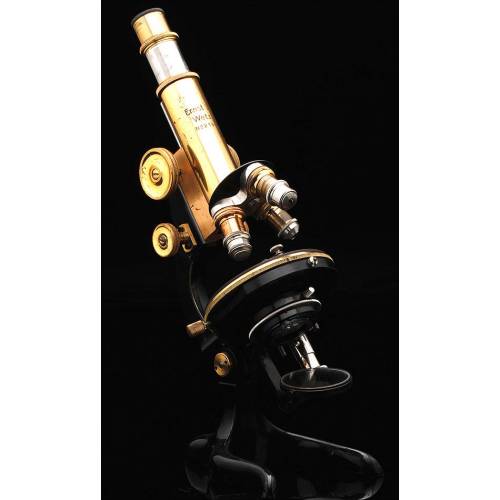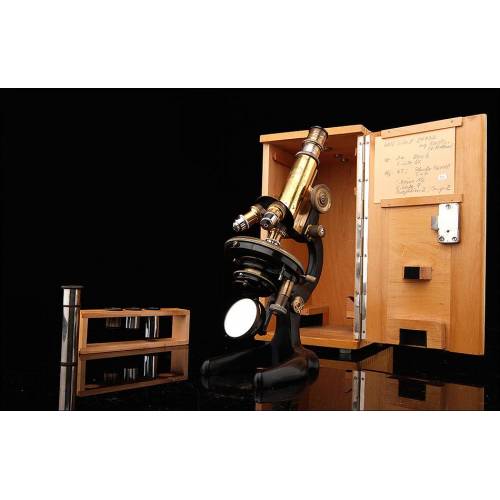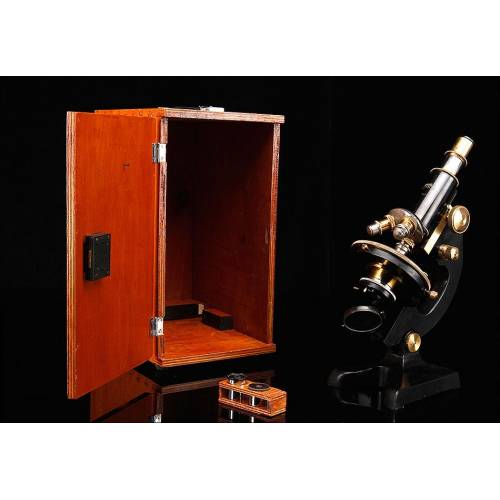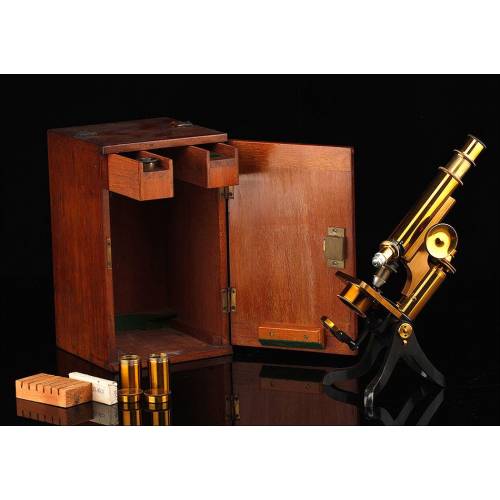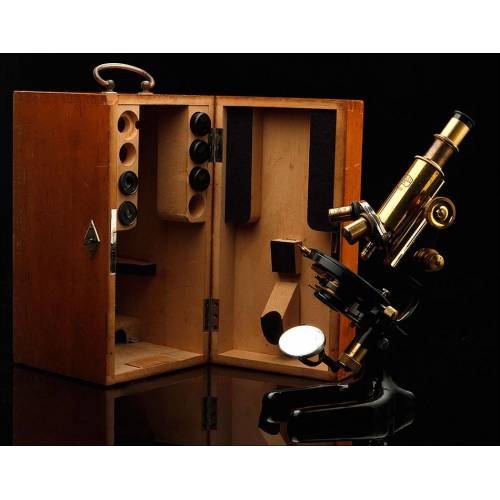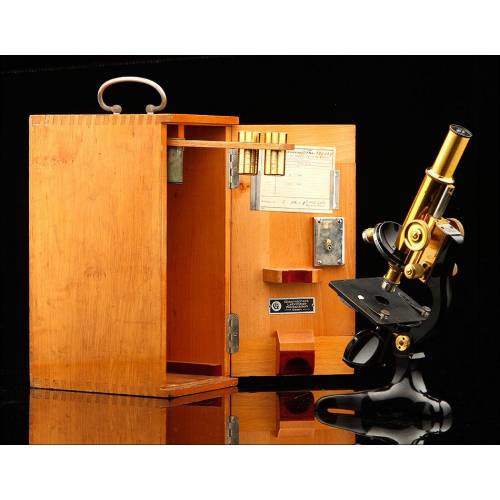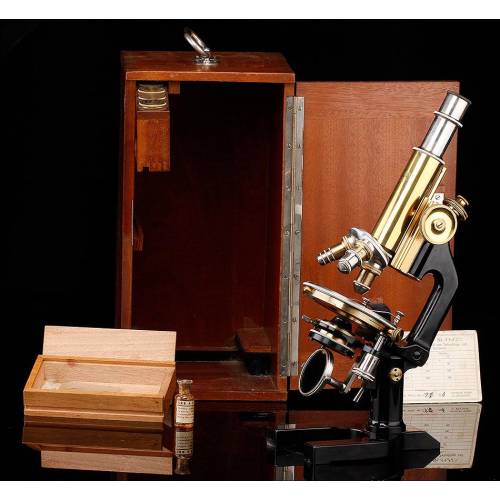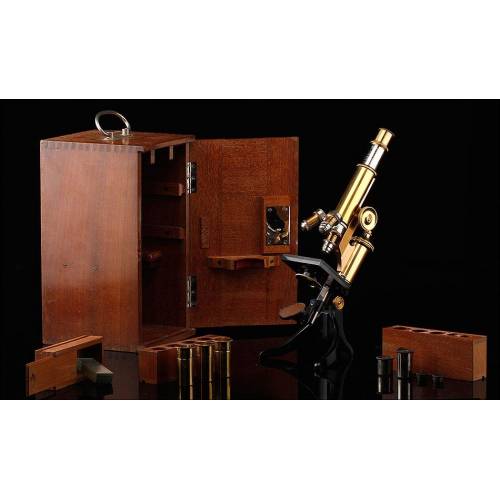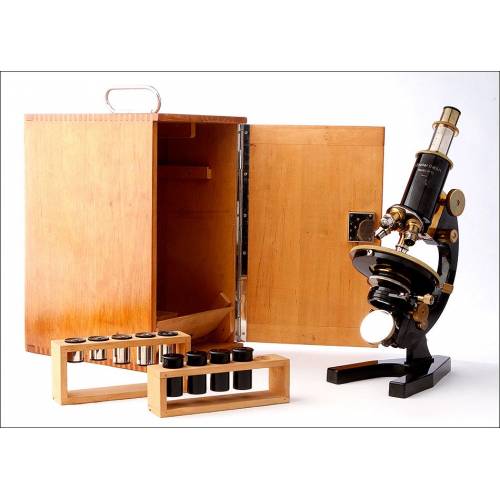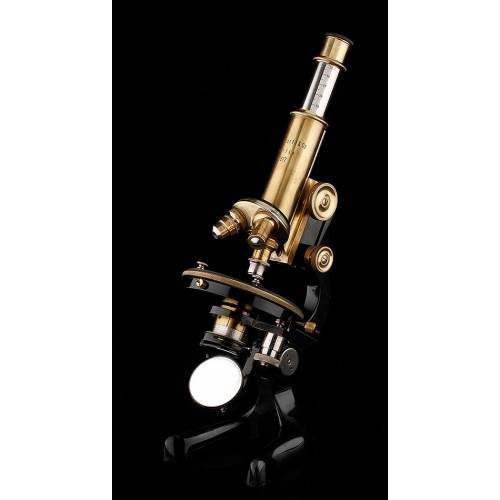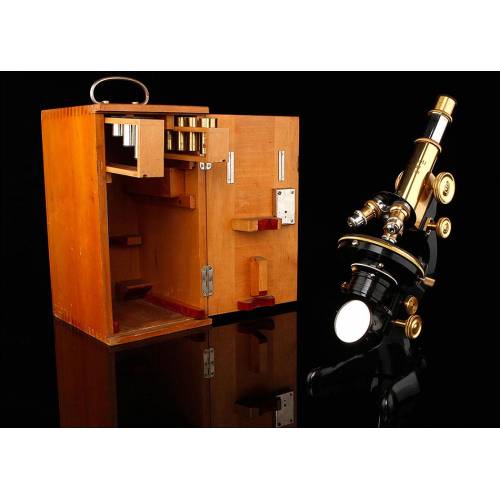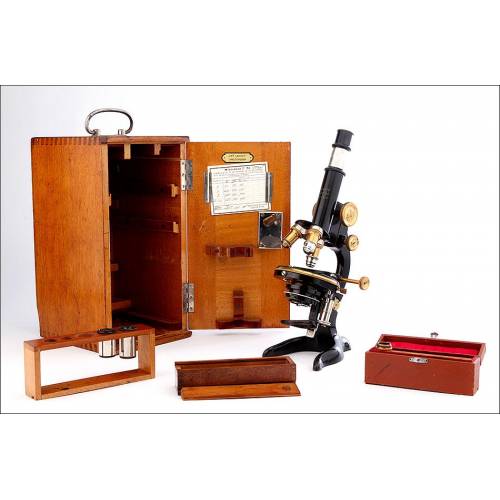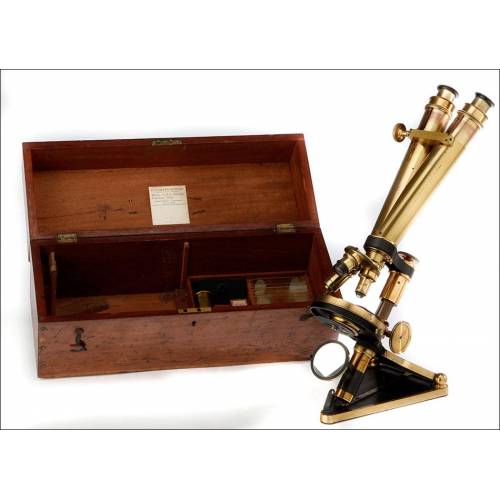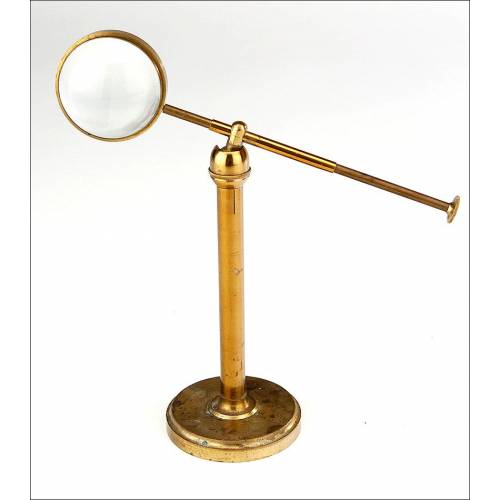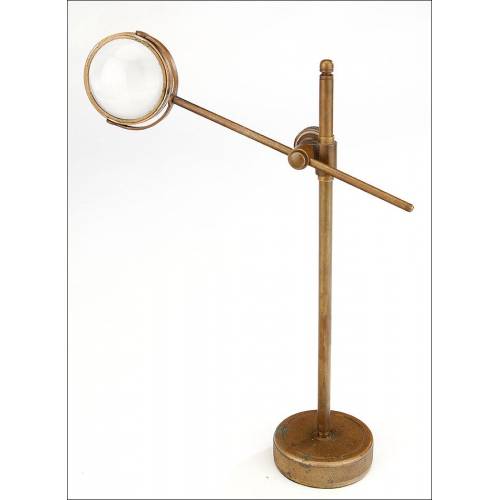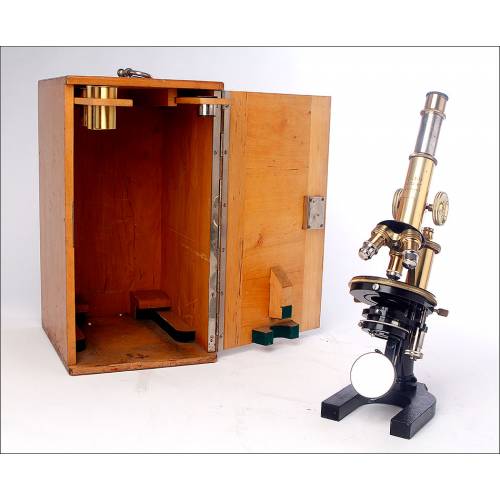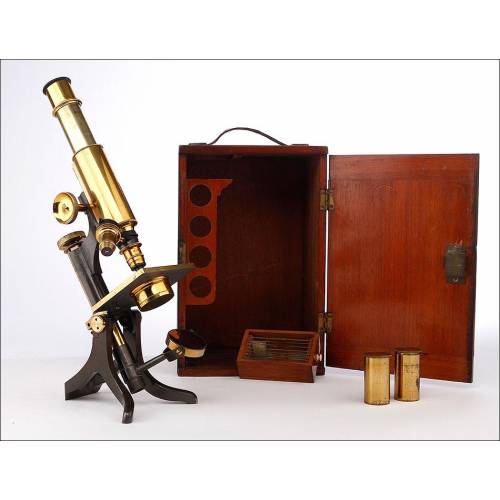D-067
Antique microscope Ernst Leitz Wetzlar, WWI. Germany 1917
Antique Ernst Leitz Wetzlar microscope made during World War I. With original lens set and in fine condition.
Sold!
Amazing antique World War I microscope by Ernst Leitz Wetzlar, made in Germany in 1917 and in really good condition. The microscope is entirely original from the period and preserves all its component parts and pieces, being also accompanied by a Leitz lens set. The set includes two objectives (nº 3 and 6) and an oil-immersion lens, together with the eyepiece mounted in the microscope. The rack and pinion system works perfectly and shows off a fluid and soft movement, just like the operating knobs. So this item does not only boasts a very attractive look, but it is also a fully functional instrument that can be used to watch samples. The microscope mounts a three-lens revolving nosepiece and a black-enameled metal foot with a lovely shiny and smooth finish. The top part is composed of brass and chromed-metal component parts. Both materials remain in fine condition; the brass keeps the original transparent lacquer. The microscopes turret bears the hand-engraved manufacturers name, Ernst Leitz Wetzlar, and the serial number (nº 188753). Under these data we can see the name of the instruments former owner, Dr. A. Wetzel. The objectives are also signed by the brand. The item preserves the original double-sided mirror and shutter, both in perfect condition. This antique World War I microscope signed by Ernst Leitz Wetzlar will shine in any collection, bookshelf or desk as the unique piece it is. There is no case, only the microscope. Dimensions: Width: 6.6 in / 16.5 cm. Height: 14 in / 35 cm.Ernst Leitz Wetzlar History The beginnings of the famous optic material manufacturing company named Ernst Leitz Wetzlar can be found in the first half of the 19th century, when the mechanic and selft-taught mathematician Carl Kellner founded the Carl Kellner Optisches Institut in Wetlzar, Germany. After his early death his widow maintained the business, and in 1864 the mechanical engineer Ernst Leitz entered the company. Just five years later, Leitz took control of the firm and changed its name for Ernst Leitz Wetzlar. Leitz led the company to success after introducing improvements such as serial production, raising sales volume rapidly after 1871. Leitz microscopes included technical improvements that increased their quality; by the late 19th century the company already had a worldwide reputation. Ernst Leitz died in 1920 and the leadership of the firm passed to his son. As well as for their microscopes and optic material, Leitz became hugely famous for their famous Leica cameras (abbreviation of Leitz Camera).

